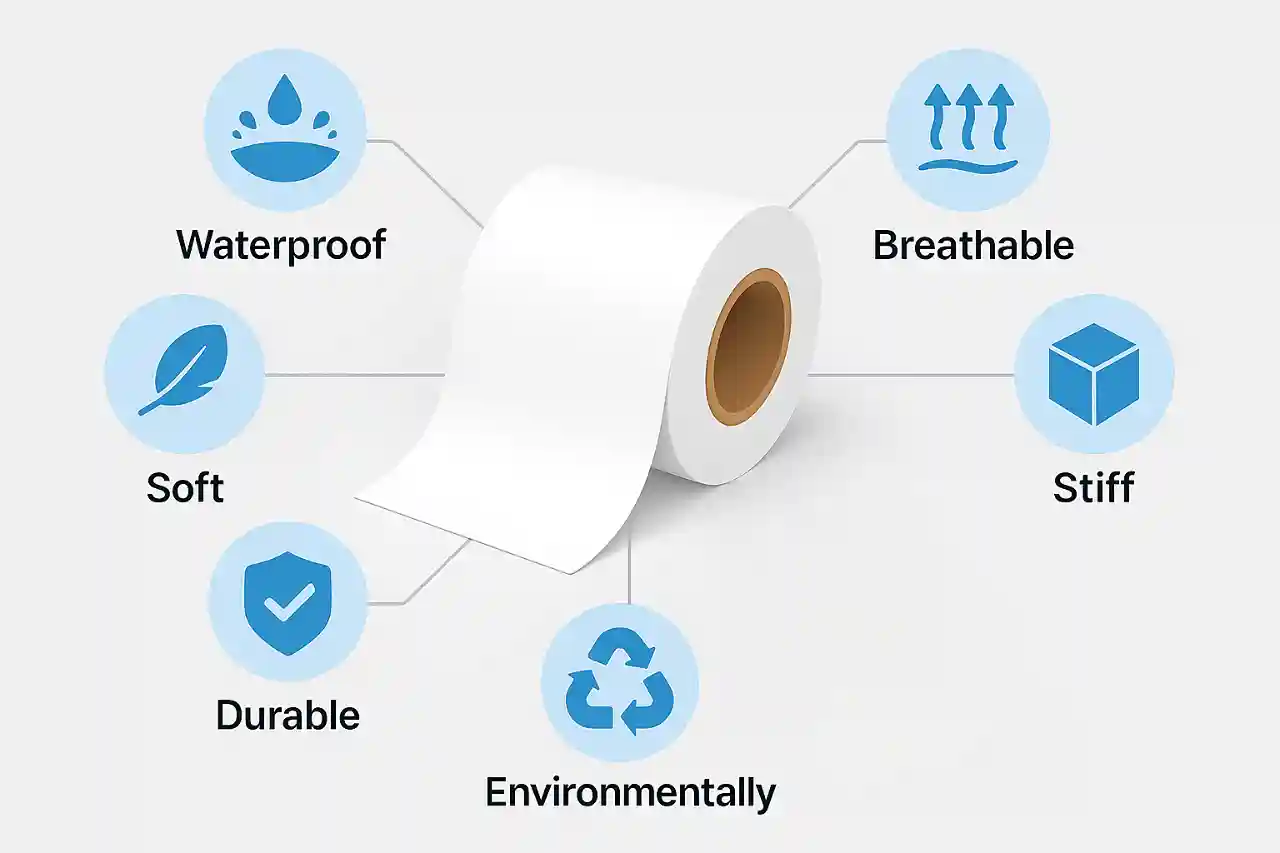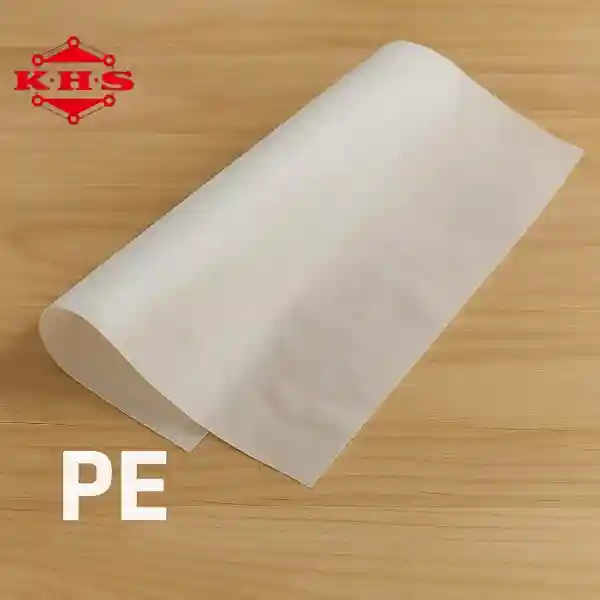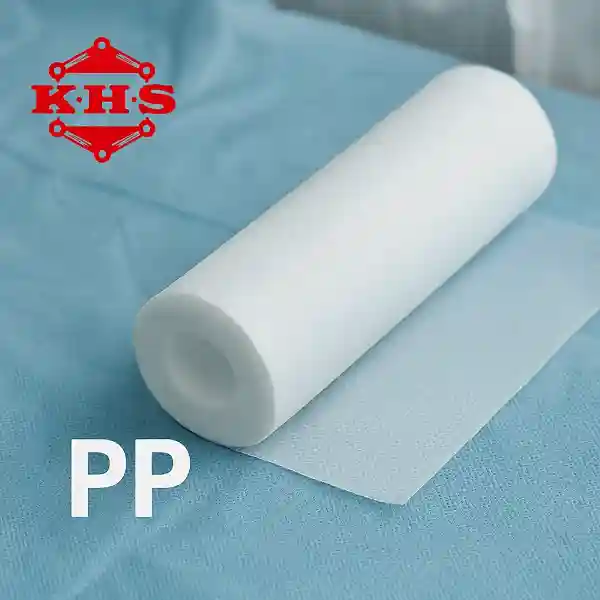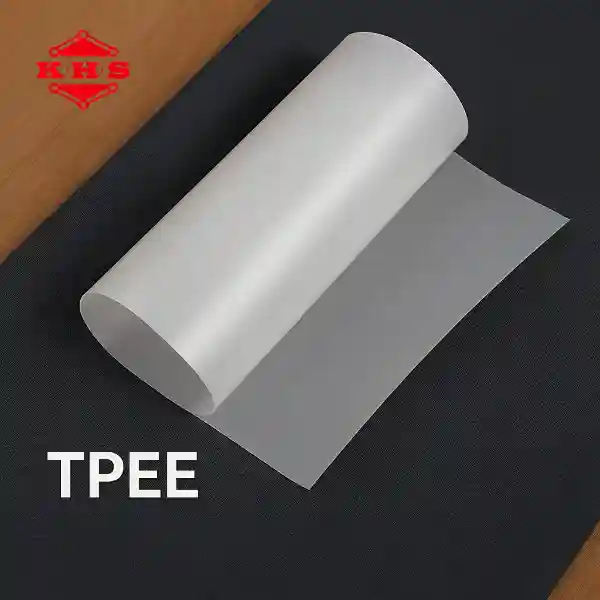Film Material Differences: Performance, Applications, and Design Options Made Clear

In fields such as medical, protective gear, hygiene, construction, agriculture, and apparel, choosing the right film material greatly enhances product functionality, lifespan, and environmental performance.
Kae Hwa Industrial offers three core types of functional films:
PE (Polyethylene), PP (Polypropylene), and TPEE (Thermoplastic Polyester Elastomer).
All three materials deliver waterproof performance and provide either breathability or moisture permeability, while also supporting a wide range of secondary processing such as embossing, dyeing, and printing.
So, how do these materials differ? Let's dive in.
🧵 What's the Difference Between PE, PP, and TPEE Film?
🔍Application Areas of PE, PP, and TPEE Films
🔹 PE Film (Polyethylene)
-
Industrial & Construction Films
Used as waterproof membranes behind walls or roofs, particularly in wood-frame construction. PE provides a cost-effective barrier to protect wooden structures from moisture. -
Medical Packaging Films
Suitable for low-cost protective films in disposable gowns or surgical drapes where basic waterproofing is sufficient. -
Hygiene Back Sheets
Laminated with nonwovens in diapers and sanitary products for softness and water resistance. -
Packaging for Warm Packs & Desiccants
Chosen for its soft, sealable, and waterproof qualities, ideal for items sensitive to moisture.
Why PE?
PE film is soft, flexible, and economical—making it perfect for high-volume applications where breathability and comfort are secondary to cost and barrier performance.
🔹 PP Film (Polypropylene)
-
Medical Membranes
Widely used in isolation gowns, surgical drapes, and other medical disposables where a combination of breathability and liquid resistance is essential. The film's microporous structure allows moisture vapor to escape while preventing penetration of fluids and contaminants.
Its uniform, smooth surface also improves sealing performance and helps maintain consistent barrier properties across production. -
Hygiene Product Back Sheets
PP film is a key component in diapers, sanitary pads, and incontinence products, where softness, breathability, and liquid repellency are all required for comfort and performance. -
Functional Apparel & Rainwear
Often laminated with woven or nonwoven textiles to create lightweight, breathable, and water-resistant layers in jackets, raincoats, and workwear. Its stable structure allows for precise cutting and consistent bonding during garment manufacturing. -
Industrial & Construction Membranes
Suitable for use in roofing and wall underlays as a waterproof barrier with improved durability and dimensional stability. -
Packaging for Heat Packs & Desiccants
Used as a protective film layer that resists puncture, moisture, and heat—ideal for sensitive materials requiring clean and consistent sealing.
Why PP?
Polypropylene film offers an exceptional balance of mechanical strength, breathability, and surface uniformity. These qualities make it a versatile, high-performance material across a wide range of hygiene, medical, and apparel applications. Its ability to combine barrier protection with comfort and processability makes it a preferred choice for advanced product design.
🔹 TPEE Film (Thermoplastic Polyester Elastomer)
-
Medical Protective Wear
Used in high-end surgical gowns, isolation garments, and breathable waterproof layers. TPEE offers monolithic waterproofing (no pores), yet has a high MVTR—ensuring no liquid penetration but excellent vapor transmission. -
Functional Outerwear & Apparel
Applied in premium sportswear, raincoats, waterproof gloves/shoes, and softshell garments. TPEE is soft, stretchable, and quiet, offering a more comfortable and flexible alternative to traditional rigid waterproof films.
Why TPEE?
TPEE is the only one of the three that is elastic, monolithic, waterproof, and breathable at the same time. It also enables mono-material recycling when combined with PET-based fabrics, aligning with circular design goals.
.webp)
🏅 Trusted Certifications for Reliable Quality
Kae Hwa films meet international standards and environmental certifications, including waterproof and moisture permeability tests, hydrostatic resistance, and GRS recycled content compliance. Whether your need is for medical, apparel, or industrial use, our certified functional films deliver both performance and peace of mind.
❓ Frequently Asked Questions (FAQ)
Q1: Do all three film types offer waterproof and breathable properties?
A: Yes. PE and PP feature microporous structures offering waterproof and breathable characteristics. TPEE, as a monolithic film, provides waterproofing and high moisture vapor transmission (MVTR), without air permeability.
Q2: What's the main difference between PE and PP?
A: PP is a non-filler material with a more uniform surface and better antiviral penetration resistance. It's also compatible with woven fabrics. PE film offers cost-efficiency and is softer.
Q3: What makes TPEE suitable for high-performance applications?
A: TPEE offers high MVTR and waterproofness, excellent softness, and recyclability through compatibility with other polyester-based materials like PET and PBT. It's ideal for durable, reusable medical and outdoor gear.
Q4: Can these films support printing and dyeing?
A: Absolutely. All three film types support secondary processing such as embossing, printing, and dyeing. Additionally, PE and PP films can be laminated with fabrics like nonwoven and woven textiles for use in medical and hygiene applications. TPEE films are suitable for lamination with polyester-based materials (such as PET and polyester fabrics), making them ideal for functional apparel and recyclable products. These lamination options allow for both functional performance and integrated visual design.


